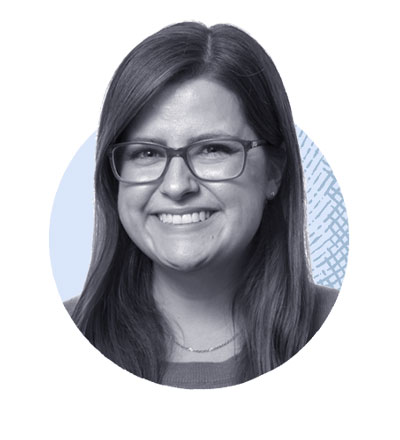Retirement Is Broken — Is a 'Pension Renaissance' Coming to Save Us?

As millions of Americans struggle to put away enough money for retirement, economists, lawmakers and workers alike are advocating for the revival of a retirement-planning relic.
A movement for a return to defined benefit plans, aka pensions, is garnering support amid anxiety over the country’s looming retirement crisis. Though these benefits have largely disappeared from the private sector over the last four decades in favor of defined contribution plans like 401(k)s, recent survey data shows the advantages of pensions are one thing Americans seem to agree on.
In a poll results released in February by the National Institute on Retirement Security, or NIRS, more than 80% of respondents said all workers should have a pension to protect their financial independence and self-reliance in retirement. More than three-quarters were also in agreement that employers’ move away from pension benefits has made the quote-unquote "American dream" more elusive.
It’s not hard to understand why U.S. workers feel this way, considering over half of all Americans are facing a financially insecure retirement, according to a report from the Senate's Health, Education, Labor and Pensions Committee.
In a surprising move, the tech company IBM — which has about 288,000 employees — announced in November that it would end its 401(k)-matching program and return to a pension-like plan. The switch has some feeling optimistic that a so-called pension renaissance may be on the horizon, but can it really make a comeback?
Where did all the pensions go?
Pensions are an employer retirement benefit that provide monthly income in retirement, kind of like a paycheck. They're also one leg of the traditional “three-legged stool” model of retirement income planning (the other two being Social Security and personal savings).
Dan Doonan, executive director of NIRS, says pension benefits are “incredibly user-friendly.”
“You sign up for a job, you do your job and you get the income later,” he says.
While workers bear the investment risk with defined-contribution benefits like 401(k)s, the opposite is true with pensions. Craig Eissler, a wealth advisor for Halbert Hargrove, says that under a pension system, employers must decide how to invest the funds that will eventually provide guaranteed monthly payments for workers after they retire.
These once-common benefits started becoming costly for employers as U.S. life expectancy increased over the 1980s and 1990s. Decreased interest rates and diminishing investment returns additionally created sizable underfunding and required employers to contribute more, Eissler says.
While pensions are still common in the public sector, most private companies now regard pension benefits as risky and expensive. Over the last four decades, most have shifted to defined contribution plans.
Almost 30% of the workforce had pension benefits in 1975, according to the HELP report. Today, that's just 13.5%.
Increasing retirement security disparities
Looking at recent 401(k) performance, one might think that retirement savers are doing pretty well. In the final months of 2023, the average 401(k) balance increased to $118,600 thanks to favorable stock market conditions. The number of 401(k) savers whose balances reached the $1 million mark jumped, too.
The report from the HELP Committee, however, suggests that the U.S. retirement system is equally divided into haves and have-nots. Almost half of Americans 55 and up have $0 saved for retirement, and a similar share of Americans overall are at risk of financial insecurity when they exit the workforce.
Among those 65 and older, 52% live on less than $30,000 a year. One in four live below the U.S. poverty line, meaning they live on less than $15,000 annually.
Doonan says that when comparing 401(k)s with pensions, a closer look reveals that they’re not serving the same group of people. Defined contribution plans tend to benefit higher earners because they generally have greater access to these benefits and are able to contribute more of their income.
There’s also a major difference between the mean and median when it comes to retirement savings, Doonan says. His institute examined the retirement resources of Generation X, which is rapidly approaching retirement age as the first generation to experience a mostly post-pension workforce. (Gen X generally includes anyone born between 1965 and 1980.) While the average Gen X household has $243,000 in retirement savings, the median household has just $40,000.
What’s more, economic factors like recent inflation, stagnant middle-class wage growth over the last four decades and record-breaking consumer debt have created obstacles to saving for many workers, exposing another pitfall of the 401(k). As of 2022, about 66% of private-industry workers had access to defined contribution plans — but of them, only 48% participated, according to the U.S. Bureau of Labor Statistics.
New provisions that went into effect this year under the SECURE 2.0 Act aim to address some of the challenges to retirement saving today. Certain part-time workers now have access to retirement plans thanks to new requirements, which will expand again next year. In 2025, workers with access to workplace retirement benefits will be automatically enrolled into most new 401(k) and 403(b) plans.
But even if they have access, lower-paid workers tend not to contribute to defined contribution plans because they don’t earn enough to set those savings aside.
Pensions, on the other hand, are "really a middle-class benefit," Doonan says.
Defined benefit plans have been shown to reduce retiree poverty across sex, race and level of education, according to an analysis released by NIRS. Among retirees who have pension income — from their own plans or that of a spouse or resident family member — 91% lived above 200% of the federal poverty level (defined by the most recent U.S. Census as $23,120 for single retirees and $32,180 for couples).
By comparison, only 60% of retirees without pension income lived above that threshold.
Separate analysis by the Congressional Budget Office found that the recent shift away from defined benefit plans may be responsible for roughly one-fifth of the increase in the nation's wealth inequality from 1989 to 2019.
Is a 'pension renaissance' coming?
Americans shouldn’t expect old-fashioned benefits to swoop in any save the day anytime soon. That's because employers are still reticent to take on the obligations that come with traditional pensions.
IBM, a "trendsetter" when it comes to human resources policy, created some excitement when it ended its 401(k)-matching program and instated a type of defined benefit plan called a Retirement Benefit Account. IBM says the account is part of the the company's personal pension plan, which helps save for retirement automatically with no contribution required from employees.
The Retirement Benefit Account replaces IBM's previous contributions to its 401(k) plan, but employees can continue contributing to their 401(k)s if they wish, a company spokesperson adds.
It's not exactly like a classic pension, and Doonan explains that the decision was largely situational. In fact, it may be more of a financial maneuver than it is a benefit to workers’ retirement security, an independent analysis found.
IBM held a surplus of $3.5 billion in its old defined benefit plan, which it closed nearly 20 years ago. Since the plan is overfunded, IBM can now use that surplus to pay for employees’ retirement benefits instead of spending operating dollars on its 401(k) plan.
Researchers determined that only a handful of other large companies may follow IBM’s lead — and only if it makes sense for them in the same way.
Otherwise, Doonan says a widespread restoration of traditional pension plans probably isn’t realistic, given how costly it would be for private employers today. From a public policy standpoint, he says, lawmakers need to make it more attractive for employers to sponsor a defined-contribution plan that will cover older people for their entire retirement. New plan designs that more evenly balance risk between workers and employers could also help to incentivize companies to offer pensions.
These reforms and innovative plan formulas could offer a new path forward for pensions.
"I think is there's been a conventional wisdom that's really hardened around the idea that there's only one way to do a pension," Doonan says — but that's no longer true.
More from Money:
When Social Security Recipients Will Get Their Checks in March
How Your College Major Affects Whether You Have Enough Money for Retirement
Killing 401(k) Tax Benefits Could Help Save Social Security, New Research Shows

